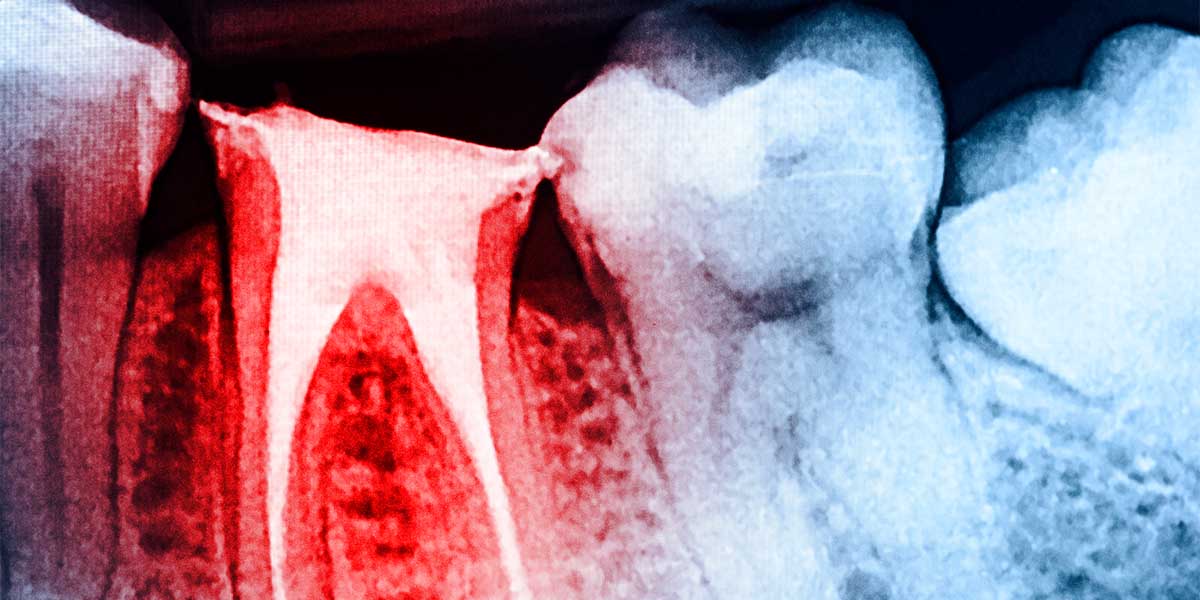Do you have a damaged or infected tooth? You might need a root canal or even an extraction. But how do you decide whether a root canal vs. extraction is best for your smile?
Ultimately, it comes down to how much physical damage there is to your natural tooth. If the damaged tooth can be saved or restored, a crown and root canal are usually best. But if your tooth is too damaged, an extraction may be the only option left. With a root canal, you get to keep your tooth, but with an extraction, you lose it completely.
What is a Root Canal?
A root canal is also referred to as endodontic therapy. During root canal therapy, the affected tooth is numbed with a local anesthetic, any active tooth decay is removed, and the infected pulp tissue is removed. Since the nerve is infected and dying, our dentist removes it to preserve the natural tooth that’s left behind. After your nerve canals are cleaned out, we seal the inside of the tooth off with gutta-percha to prevent re-infection. The total root canal process usually requires two procedures: the root canal and final crown placement.
Why Do I Need a Root Canal?
Without a root canal, the damaged tissue inside of your tooth will cause chronic infection and/or pain. The tooth will gradually deteriorate and fracture, leaving little tooth left to repair.
Root canal treatment allows us to preserve your natural tooth for as long as possible, preventing the need for an extraction.
You might need a root canal if you have a deep cavity, fractured tooth, or visible dental abscess. When the infected tissue is left alone, the abscess can spread into adjacent teeth or structures.
Rest assured, getting a root canal with our family dentist is more comfortable than most people realize. Since local anesthesia thoroughly numbs your tooth, you won’t feel much of anything other than a small mouth of pressure during the dental procedures. Most dentists also make light sedation available upon request.
Is it Better to Have a Tooth Extraction?
Wondering if it’s better to have your dentist or an oral surgeon perform a tooth extraction? Root canals are the standard of care, compared to root canals, as they prevent total tooth loss. Unfortunately, most people assume an endodontic dental procedure is painful and extreme. In reality, it’s easier to recover after a root canal vs. extraction. With an extraction, there is some soreness, light bleeding, longer recovery, and the need to replace the extracted tooth as quickly as possible.
Dental extractions provide fast pain relief, which is important if you’re experiencing a dental emergency. But the space it creates can impact your overall mouth.
Disadvantage of Tooth Extractions
Since an extraction removes your whole tooth, it will need to be followed up with a procedure that replaces your missing tooth, such as a bridge, dental implant, flipper, or partial denture. Removed teeth also trigger bone loss at the extraction site, weakening the area and potentially leading to further damage in the adjacent teeth. Over time, your overall bite will start to drift out of alignment, leading to changes in chewing patterns, TMJ movement, and enamel wear. Sure, removing a damaged tooth may seem like the fastest and quickest solution. But having a tooth extracted leads to a long line of side effects and additional procedure needs.
Choosing Between a Root Canal and Tooth Extraction
When at all possible, our Chattanooga dentist recommends root canal therapy on an infected tooth instead of removing it altogether. Endodontic treatment will prevent discomfort, stop the source of pain, and block bacteria from re-entering the tooth. But when there isn’t enough tooth structure left to repair, or you’re in serious discomfort, an emergency extraction procedure may be the best short-term solution. Placing ice packs over that area and taking an anti-inflammatory as directed will keep any discomfort to a minimum while you heal.
Recovery and Maintenance
The recovery after root canal vs. extraction is nothing alike. Like any other restorative procedure, there is little difference in getting a root canal and what to expect once you return home. There can be some minor soreness where the local anesthetic was injected, or your mouth may be sore if you had to keep it open for a long time, but otherwise, the bacteria causing your tooth pain is completely gone. There is no more pulp tissue to feel sensations or painful stimuli, which is why it’s best to treat damaged teeth instead of removing them.
However, if you’re having a tooth extraction, you may need a day or two before you head back to work. Even then, you’ll need to make sure not to participate in any rigorous physical activity, as it could delay the healing process. Especially with wisdom teeth. And then you’ll need to come back to visit our dentist to replace the tooth at your earliest convenience before the adjacent teeth start to move and shift. By that point, there are additional concerns to have to worry about.
Additional Treatments Required
Other than dental implant treatment, most procedures are not a “once and done” event. For example, having teeth extracted creates extra space in your smile, which can cause other teeth to drift out of alignment. You’ll need to fill in the extraction site with a bridge or implant to maintain proper spacing.
As for root canal therapy, since the damaged pulp tissues are removed, and your tooth isn’t “alive” any longer, the tooth’s structure can be more brittle than before. To protect it, our Chattanooga dentist will need to place a crown over the tooth, protecting the remaining structure against damage or a severe fracture.
Family Dentist in Chattanooga
Our Chattanooga family dentist offers comprehensive oral health services, ranging from white fillings and root canals to extractions and crowns. We invite you to reserve an exam with our dentist to discuss your treatment options and decide which one is right for you. Flexible financing plans are available. Contact McOmie Family Dentistry today for an appointment.




